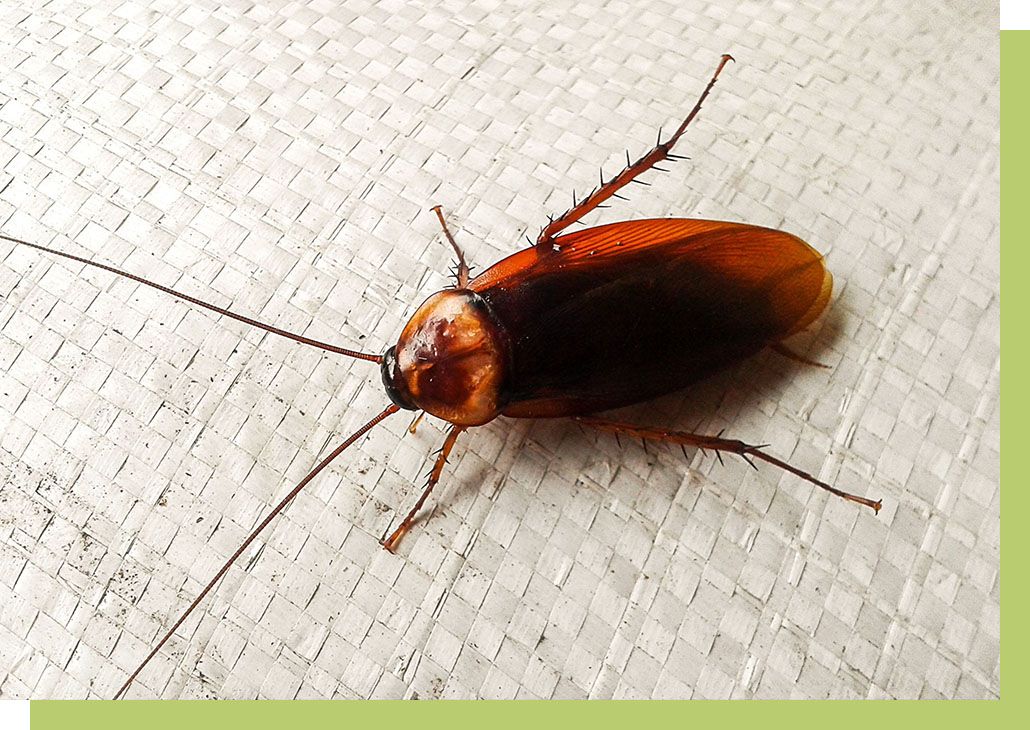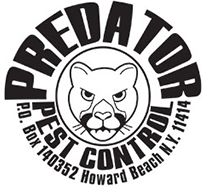Roaches
Roaches

There are about 30 species of cockroaches living in the human environment. The German cockroach and the Oriental cockroach are the most common pest species in the UK. They live in warm conditions found within buildings and are perfectly adapted to all human settlements. Cockroaches are active at night and avoid light. The insects eat organic matter in any form. They are scavengers and may turn cannibalistic in times of food shortage.

APPEARANCE
The adult German cockroach measures about 1.3 – 1.6 cm (0.51-0.63 in) long and is brown to almost black. It has distinctive antennae and large wings but is unable to fly. Young cockroaches look like the adults, but smaller. Newly hatched nymphs are white. The adult Oriental cockroach is about 2.5 cm (1 in) long. The insects have a dark brown or black glossy body as well as clearly visible antennae on their head. The male has long wings and is capable of short flights. The female has shorter wings and can not fly.
INFESTATION
Cockroaches are the most common and prominent household insects in the world. They can be brought home by chance in packaging, laundry, raw materials or furniture. The insects also easily climb up rough and polished surfaces, so they can invade residential and industrial buildings from drains, rubbish chutes, plumbing and heating systems or other service ducts. The uncontrolled population of cockroaches grows quickly due to their fast reproductive cycle and short period between birth and sexual maturity.
HABITAT
Cockroaches can be found at any kind of human settlement. However, the insects prefer warm places where they may easily come across food waste such as restaurants, pubs, food processing facilities, shops, hotels, hospitals, day nurseries, schools and domestic kitchens. Cockroaches also like dark and humid locations with decaying organic matter as for instance laundries, sinks, sewers, drains or damp basements. During the day, the insects hide in cracks, crevices and holes which are often behind washbasins, baths, sinks, toilet pans, cookers, cupboards, kitchen equipment or bathroom fittings. Cockroaches are most active in the evening hours and at night. They feed on almost every kind of organic matter, particularly on starch, sugar, grease and meat. If there is a shortage of foodstuffs, cockroaches can even eat leather, soap, toothpaste, glue, wallpaper, feces or each other.
DETECTION
Shy as they are, cockroaches can be easily spotted at night when they normally scavenge for food in infested rooms. During the daytime, a close inspection of the dark and humid places where the insects usually hide may be sufficient to find the infestation since cockroaches stay together in groups and leave well visible traces of their presence such as feces, saliva, abdominal glands or unpleasant smell. If there are any dead insects found it also clearly indicates that the room is infested. Make sure to contact a cockroach exterminator as soon as possible.
HEALTH HAZARDS
Cockroaches spread serious diseases such as dysentery, polio, typhoid and gastroenteritis. They pollute human food with their feces, saliva and other bodily secretions which contain harmful bacteria.
CLEANLINESS AND HYGIENE
Keeping living and working areas clean, regularly removing food residues and organic waste as well as keeping food in closed containers are fundamental to prevent or to reduce cockroach infestation. Other effective steps are turning the heating down to a reasonable level and sealing all gaps, cracks and holes where the insects can potentially hide. These measures are highly recommended, but insufficient to entirely eradicate an already existing pest since cockroaches are extremely resilient and flexible. They are very successful at establishing well-hidden niches in infested buildings where the insects can breed and survive without food for a very long period of time. The immature cockroaches can live off excretions from the adult and remain hidden away from all threats.
Our services extend to a wide variety of facilities:
- Hospitals
- Health care facilities
- Nursing homes
- Day care facilities
- Schools
- Office Buildings
- Hair salons, Barber shops & Nail salons
- Supermarkets, Restaurants & Bars
- Industrial properties, Food processing plants, Warehouses & Storage facilities
- All commercial properties
Ready to Get Started?
Call or email us today and let our services speak for themselves.
